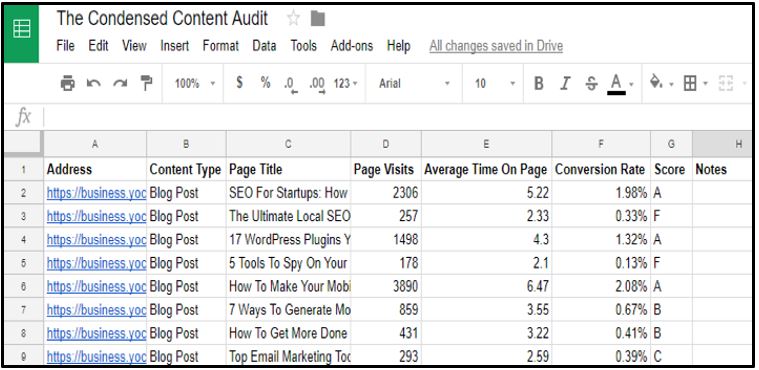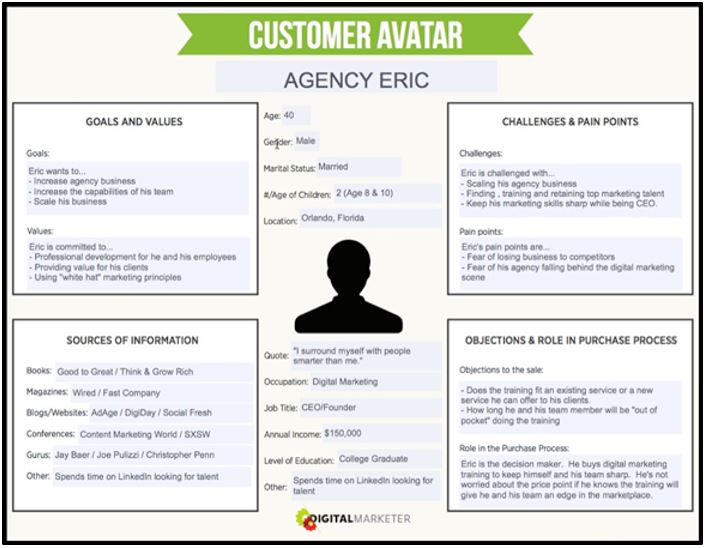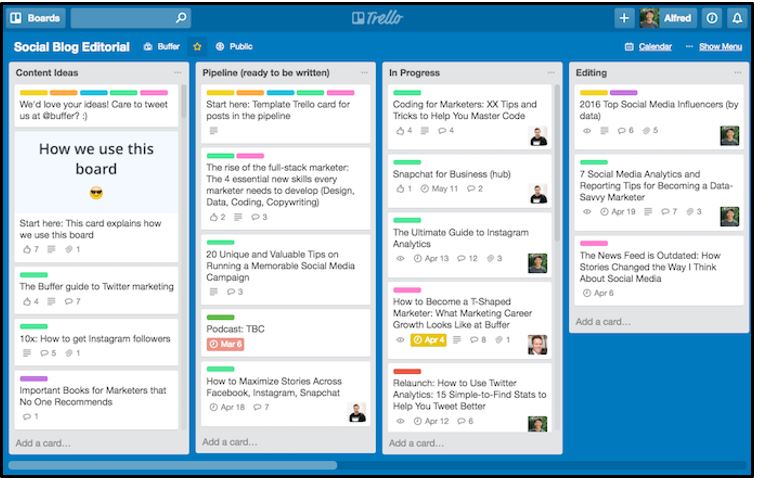More than 90 percent of marketers rely on digital content to engage with potential customers.
Effective content marketing that leverages the power of copywriting produces amazing results for businesses, generating three times more leads at 62 percent less cost than traditional marketing.
Unfortunately, over 60 percent of professionals in the field lack a well-defined action plan.
Developing a solid content marketing strategy can be challenging. You must take different components into account and coordinate them to be successful.
Here are the 5 essentials of a good marketing plan that you need to get right.
1- The Plan Must Highlight Where You Stand Today
Find out what content will help you meet your goals. This involves performing a content audit. You must:
- Log all pieces of content, including guest posts and blog posts, in a tracker
- Measure their usefulness (choose KPIs that work for your business)
- Identify gaps
Log Your Content
To log your blog or website content, use a URL crawler like Screaming Frog or content audit tool like SEMrush that:
- Lists URLs
- Locates duplicate pages
- Analyzes page titles and descriptions
- Creates sitemaps
Get a full analysis of your existing content, including length, titles and descriptions, social shares, and backlinks. Export this data into a spreadsheet.
I strongly recommend using software for this, because the tools I highlighted above can extract all this information in a downloadable Excel sheet, saving you dozens of hours.

Measure Performance
Figure out the usefulness of your content by checking metrics like:
- Search engine ranking for keywords associated with that content
- Inbound links to the content
- # of social shares
Use SEMrush tools like position tracking and site audit for all the details. Find out:
- which content pieces are effective and do not require changes
- which ones need to be replaced or removed
- which ones require some updating or improvement to fulfill your goals
Identify Gaps
Fill the gaps in your content. This includes:
- Including relevant high volume keywords that your content is not targeting currently
- Addressing unanswered questions from your target customers in your content
- Repurposing your current content in the form of infographics, videos, and podcasts to create means of directing traffic to the webpage
My recommendation: Use Ahrefs to perform a content gap analysis and find competitor keywords your business can target with new content.
2. Clearly Outline and Detail The Type of Content You Want to Publish
Earlier, content meant written content. However, more content formats have increased in popularity. Visual content, for example, has proven highly effective. Many prospects prefer visual content over written pieces. In fact, 54 percent of consumers expect video content from companies.
Aside from traditional written content, modern content formats include:
- Videos
- Webinars
- Presentations
- Infographics
- Podcasts
Here’s a 4-step method.
- Select the type of content to develop based on your audience profile. Online grocery store, Mercato is smart in publishing content as per the needs of its audience. It regularly publishes kitchen hacks in its blog that are loved by its audience which mainly comprises food lovers.
- Go for a combination of different content formats for improved customer engagement.
- Vary the content based on the channels you are using along with the preferences of your target audience.
- Experiment with different content types to see how it affects the overall results.
3. Define Content Marketing KPIs
Despite the effectiveness of content marketing, your business will not enjoy any ROI without well-defined goals. Set clear targets so your marketing activities do not lose focus and you easily judge their failure or success.
Use content marketing to achieve business goals like:
- Lead acquisition
- Customer acquisition
- Lead nurturing
- Brand awareness
- Sales
Try the SMART (specific, measurable, attainable, relevant, and time-bound) strategy when setting your content marketing goals. Of course, your business goals will vary depending on which stage of the sales funnel you are developing content for. Use your goals to determine the kind of content you create, how to promote the content, and more activities.
4. Conduct In-depth Audience Research
Here’s a dependable 4-step process.
- Understand who you want to target with your content.
- Try to find out information about their favorite content type and whether they expect an informal or formal content style.
- Know which channel to use and the type of content to create.
- Carry out extensive audience research to find out these details and develop an audience/buyer personal for every kind of ideal customer.
A good way to carry out your research is to develop a profile on the types of individuals you wish to convert using your content. You might also take a look at your present customer base and develop target profiles from the best leads or customers your business has.
This should include:
- Age and Gender: Basic characteristics of your target audience
- Lifestyle: How they live and hang out
- Location: Where they come from
- Education and Income Level: Choose between affluent, highly educated clients and younger consumers with weaker purchase capabilities
 Tailor content as per your customers’ requirements to attract an audience easily and increase your organization’s profits. Create a corresponding content strategy as per your customer profiles.
Tailor content as per your customers’ requirements to attract an audience easily and increase your organization’s profits. Create a corresponding content strategy as per your customer profiles.
5. Develop a Content Calendar
When creating content to attract your audience, consistency is a key factor. Please keep in mind that you won’t get results overnight with content marketing; focus on consistently delivering stellar content experiences to grow.
The process becomes easier when you plan your content publishing at regular intervals with the help of a content calendar. Use a content calendar to get a visual overview of your content marketing activities. Here’s how a content calendar could look like:
 Allow team members to track the progress on various pieces of content easily, and make the whole process productive for the team.
Allow team members to track the progress on various pieces of content easily, and make the whole process productive for the team.
Include relevant details in the content marketing calendar like:
- Publishing date
- Content format
- Team members responsible for content
- Promotional channels
- Due dates for first draft of content
- Stage of sales funnel
Use Google Sheets or other specialized tools to create the content calendar. For more functionality, you can also try tools like CoSchedule that let you plan content across various channels and automate publishing.
Thanks to your content calendar, you can consistently produce content to achieve the desired content marketing results.
Concluding Remarks
Take the marketing goals and voice of your company into consideration when developing a content marketing strategy. Do not compromise in any way, otherwise, you risk jeopardizing the success of your business. The right content marketing plan drastically increases the chances of achieving your business targets in a timely manner.
____________________________________________________
Interesting related article: “What is a Marketing Strategy?”

